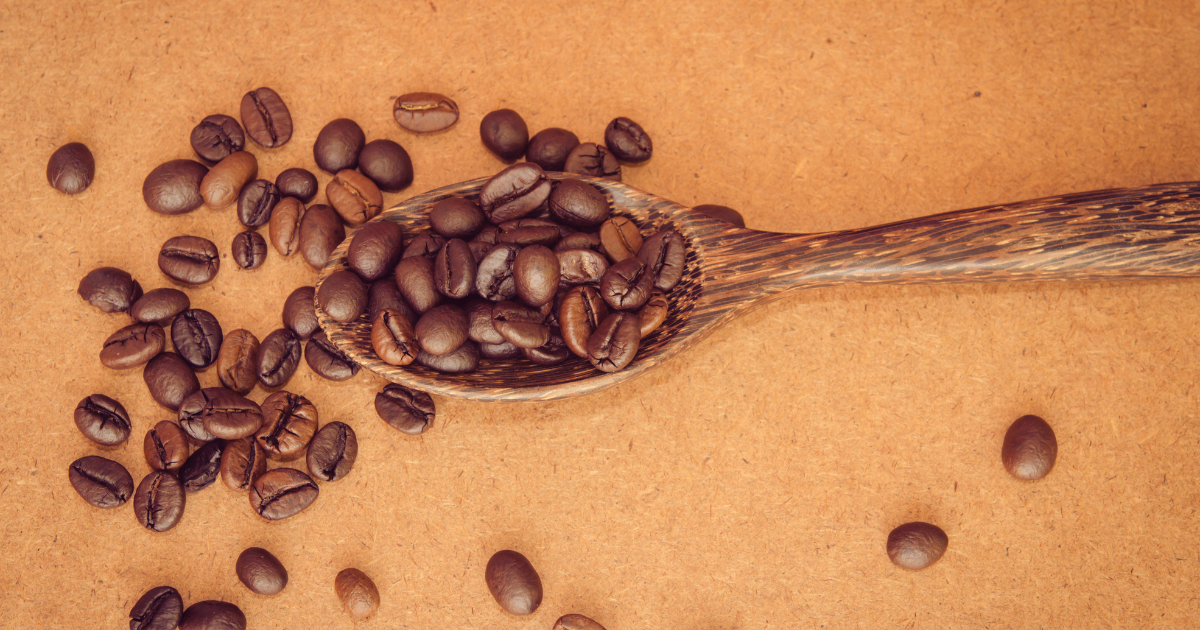For many, coffee is simply a daily ritual – a necessary jolt to start the day or a comforting warm drink. But beyond the realm of mass-produced blends lies a vibrant, complex, and incredibly rewarding world: specialty coffee. This isn’t just about expensive beans; it’s a philosophy, a commitment to quality at every step, from the farm to your cup. Transitioning from a casual coffee drinker to an appreciator of specialty coffee opens up a universe of nuanced flavors, captivating aromas, and a deeper connection to the global journey of your brew.
Have you ever wondered why some coffees taste like blueberries, while others have notes of chocolate or jasmine? Or how to choose a truly exceptional bag of beans? This comprehensive guide is designed to be your roadmap into the exciting landscape of specialty coffee. We’ll demystify common terms, equip you with practical tips for selecting, brewing, and tasting, and help you develop a more discerning palate. Get ready to transform your morning routine into a sensory adventure, as you learn to identify distinct characteristics, appreciate the craftsmanship behind each bean, and embark on a fulfilling journey towards becoming a true coffee connoisseur.
Understanding Specialty Coffee: Beyond the Basics
What exactly sets specialty coffee apart from the conventional cup? It’s more than just a marketing term; it represents a commitment to excellence across the entire supply chain. From meticulous farming practices to precise roasting and expert brewing, every stage is optimized to ensure the highest possible quality in your cup. Recognizing these core tenets is the first step in your journey to becoming a true coffee enthusiast.
The Journey of Quality: From Seed to Cup
- Exceptional Farming: Specialty coffee begins with carefully selected coffee varieties (often Arabica, but increasingly high-quality Robusta) grown in ideal microclimates with optimal altitude, soil, and rainfall. Farmers use sustainable practices, focusing on tree health, selective harvesting of only ripe cherries, and meticulous processing (washing, natural, honey methods).
- Rigorous Processing: After harvest, beans undergo precise processing methods designed to enhance their inherent flavors. This often involves controlled fermentation and careful drying to prevent defects and develop complex profiles.
- Expert Roasting: Unlike commercial roasters that prioritize consistency for a mass market, specialty coffee roasters meticulously develop roast profiles to highlight the unique characteristics of each particular bean’s origin and processing. This means a lighter touch to emphasize acidity and fruitiness, or a specific development to bring out chocolate and caramel notes.
- High Standards: The Specialty Coffee Association (SCA) defines specialty coffee as beans with a score of 80 points or higher on a 100-point scale during a professional cupping session. This stringent grading ensures only the best quality beans make it to market.
Key Characteristics of Specialty Coffee
When you taste a specialty coffee, you’ll typically notice several distinct qualities:
- Clear Flavor Notes: Instead of just “coffee flavor,” you’ll detect specific notes like “blueberry,” “lemon,” “caramel,” “dark chocolate,” or “floral.” These flavors are inherent to the bean and are unlocked by proper processing and roasting.
- Vibrant Acidity: Not to be confused with sourness, desirable coffee acidity provides brightness, liveliness, and complexity, similar to the zest in fruit. It adds structure to the cup.
- Pleasant Body/Mouthfeel: The tactile sensation of the coffee in your mouth, ranging from light and tea-like to creamy and syrupy. Specialty coffees often have a pleasant, well-defined body.
- Cleanliness and Sweetness: A lack of off-flavors or bitterness (unless it’s a desirable dark chocolate bitterness), and a noticeable natural sweetness that often develops as the coffee cools. These attributes are what make specialty coffee such a rewarding experience for your palate.
Building Your Specialty Coffee Experience: Practical Steps
Embarking on your specialty coffee journey doesn’t require a massive investment, but rather a shift in mindset and a willingness to explore. These practical steps will guide you in selecting, preparing, and tasting specialty beans, helping you cultivate your palate and truly appreciate the nuanced world of high-quality coffee.
Start with Quality Sourcing
- Look for Roast Dates: Always prioritize bags with a clearly marked roast date (ideally within 2-4 weeks of purchase). This ensures freshness. Avoid “best by” dates, which are often too far out.
- Buy Whole Bean: Purchase whole coffee beans whenever possible. Grinding just before brewing is the single most impactful step you can take to preserve flavor.
- Visit a Specialty Coffee Roaster/Café: These establishments are experts. Talk to the baristas or roasters; they can recommend beans based on your preferences and explain their origins and flavor profiles.
- Read Tasting Notes: Pay attention to the tasting notes on the bag. These are clues to what flavors you might expect and can guide your selection. Don’t be intimidated if you don’t taste them all immediately!
Invest in Basic Brewing Gear
You don’t need a professional setup, but a few key tools make a difference:
- Burr Grinder: This is perhaps the most important investment. A good burr grinder provides a consistent, uniform grind, crucial for proper extraction and flavor. Blade grinders chop inconsistently, leading to uneven extraction.
- Digital Scale: Essential for accurate measurement of both coffee and water. Precision in your coffee-to-water ratio (typically 1:15 to 1:17) is vital for consistency.
- Basic Brewer: Start with an accessible and forgiving method like a pour-over (e.g., Hario V60, Chemex), an Aeropress, or a French press. These methods allow you to control brewing variables.
- Gooseneck Kettle (Optional but Recommended): Provides precise control over your water pour, which is particularly beneficial for pour-over methods.
Develop Your Palate: Taste Actively
- Taste Mindfully: Don’t just drink your coffee; taste it. Pay attention to its aroma, initial flavors, body, acidity, sweetness, and aftertaste.
- Use the Coffee Flavor Wheel: As discussed in a previous article, the Coffee Flavor Wheel is an invaluable tool. It helps you identify and articulate specific notes, expanding your sensory vocabulary. Keep it handy during tasting.
- Compare and Contrast: Brew two different specialty coffees side-by-side. Notice the differences in acidity, body, and flavor notes. This active comparison helps train your palate to discern subtle variations.
- Taste Other Foods: Consciously taste fruits, nuts, spices, and chocolates. This builds your “flavor library” and makes it easier to recognize similar notes in coffee.
- Don’t Be Afraid to Experiment: Try different brewing ratios, water temperatures, and grind sizes. Small adjustments can yield big differences in flavor. Becoming a coffee connoisseur is a journey of continuous learning and sensory exploration.
Common Challenges and Overcoming Them
Transitioning to specialty coffee can come with its own set of challenges, from understanding complex terminology to dealing with unexpected flavors. However, with a little guidance, these hurdles can be easily overcome, paving the way for a more enjoyable and insightful brewing journey. Embrace these learning opportunities as part of your growth as a coffee enthusiast.
Navigating Terminology
- Demystifying Labels: Terms like “single origin,” “micro-lot,” “anaerobic natural,” or “F1 hybrid” can seem daunting. Don’t feel overwhelmed.
- Ask Questions: Your local specialty coffee shop or roaster is a great resource. Don’t hesitate to ask them to explain terms or suggest coffees.
- Online Resources: Many specialty coffee blogs and educational websites offer glossaries and explanations of common terms, helping you build your knowledge base. Understanding the language of specialty coffee enriches your appreciation.
Dealing with Unexpected Flavors
- “Sour” vs. “Bright Acidity”: Initially, some might mistake a desirable bright acidity for sourness. Remember, good acidity is lively and adds complexity, while sourness (often from under-extraction) is unpleasant and one-dimensional.
- “Grassy” or “Vegetal”: Sometimes, these notes can indicate under-roasted beans or a specific processing method. Learn to differentiate between a pleasant herbaceous note and an undesirable “green” flavor.
- Embrace the Learning Curve: Not every coffee will be your favorite. That’s part of the exploration! Each new taste, even one you don’t prefer, teaches you something about your palate and coffee’s diversity.
- Adjust Your Brew: If a coffee tastes consistently off (too sour, too bitter, too weak), try adjusting your grind size, water temperature, or brew time. Small tweaks can often balance the flavors.
The journey from casual sip to coffee connoisseur is a rewarding exploration into the depth and diversity of the world’s most beloved beverage. Embracing specialty coffee means appreciating a rigorous commitment to quality at every stage, from the farm to your cup, resulting in brews with clear flavor notes, vibrant acidity, and a delightful body.
By actively sourcing freshly roasted whole beans, investing in essential brewing gear like a burr grinder and digital scale, and diligently training your palate with mindful tasting, you’ll unlock a universe of nuanced flavors. Don’t be intimidated by new terminology or unexpected tastes; instead, view them as opportunities for growth. This path promises not just better coffee, but a deeper connection to its global journey and the skilled hands that bring it to life. Cheers to your evolving palate and the exciting world of specialty coffee!

